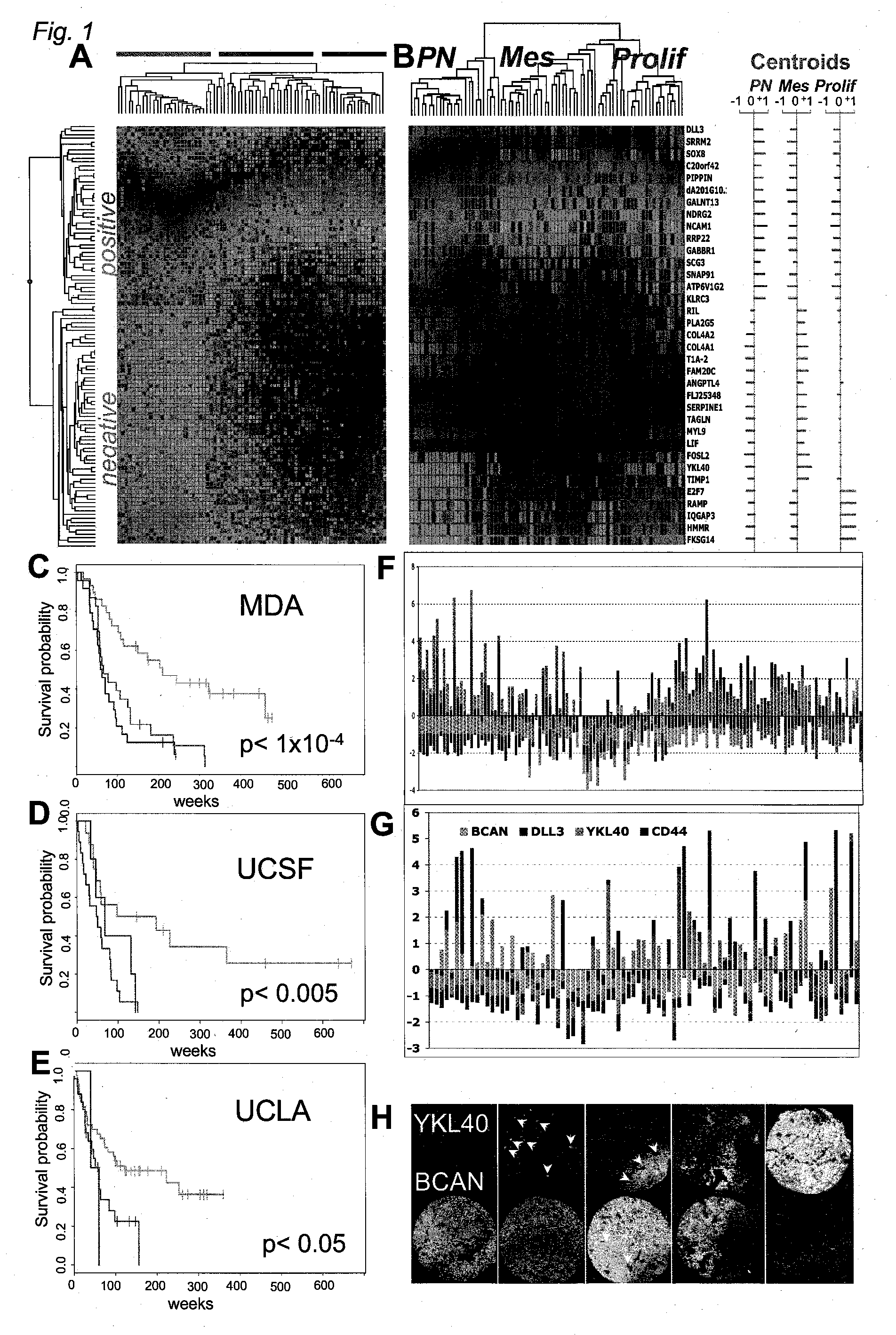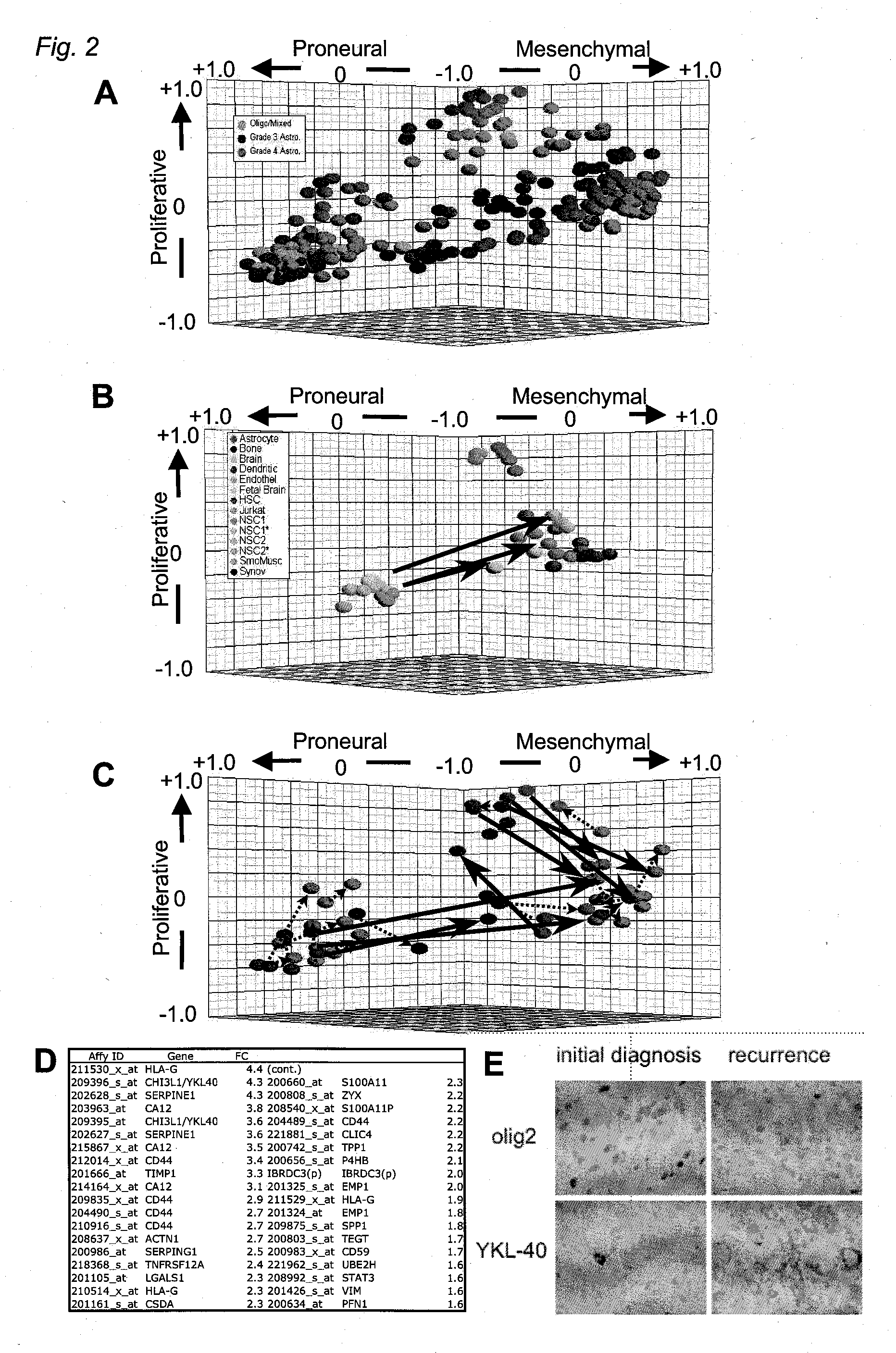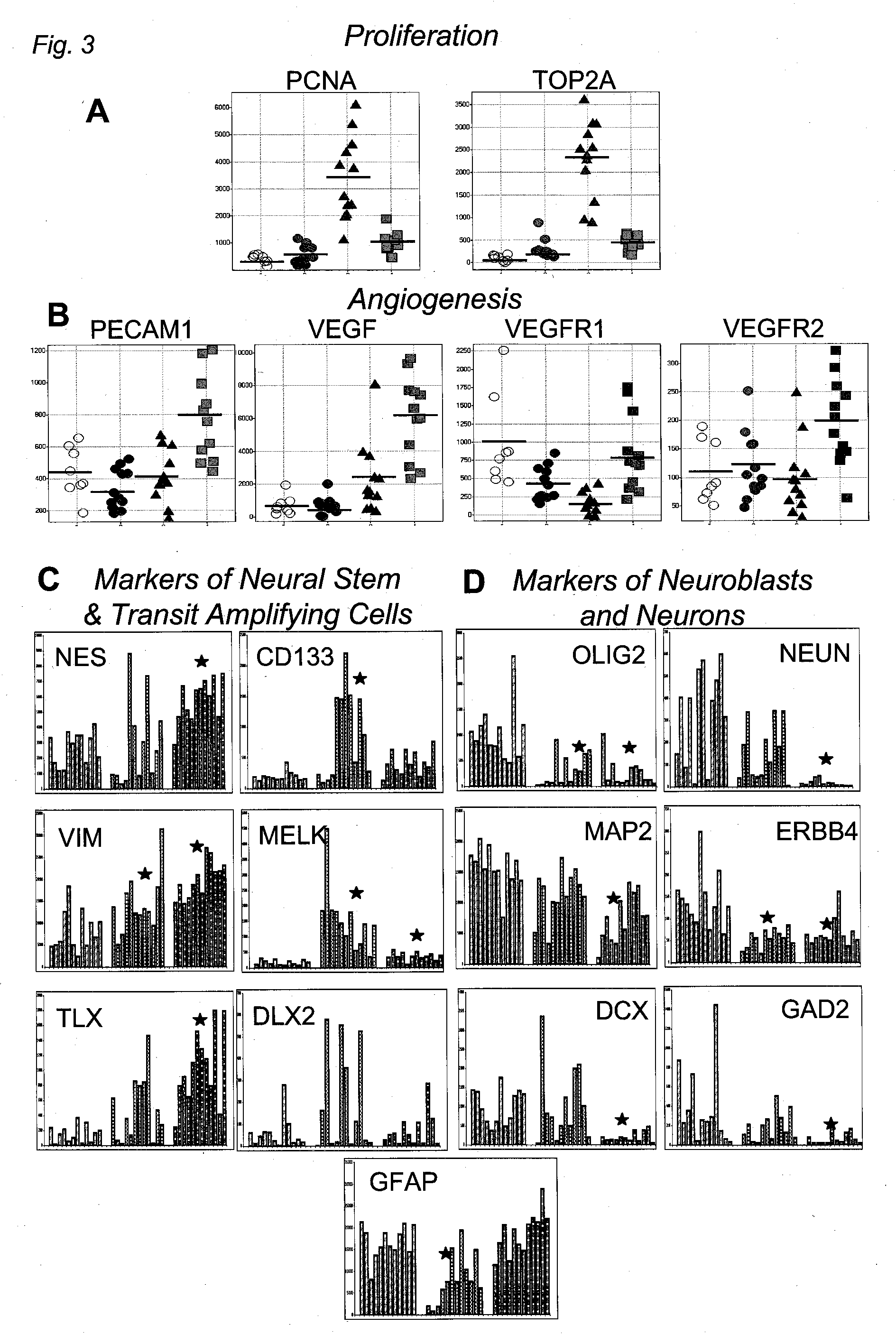Method for Diagnosing, Prognosing and Treating Glioma
a glioma and cancer technology, applied in the field of glioma, can solve the problems of undetermined stem-like cell contribution to disease progression or therapeutic response, unrecognized molecular determinants of disease aggressiveness, and uncertain cell type(s) of origin, and achieves shorter survival, longer median patient survival, and high expression levels
- Summary
- Abstract
- Description
- Claims
- Application Information
AI Technical Summary
Benefits of technology
Problems solved by technology
Method used
Image
Examples
example 1
Experimental Procedures
Tumor Samples and Patient Characteristics
[0362] A summary of all tumor cases studied is included in FIG. 8A. For survival analysis, three expression profiling datasets were analyzed. We obtained frozen tissue samples from 76 cases at MDA, RNA from 39 cases from UCSF (Nigro et al., Cancer Res. 65: 1678-1686 (2005), and data from a previously published study from UCLA (Freije et al., supra.). Cases analyzed in the first two datasets met the following criteria: Fresh-frozen samples were obtained at the time of initial surgical resection from patients (>21 years of age) who did not receive prior radio- or chemotherapy. Clinical follow-up information was available for a period of at least 2 years post-surgery or until death. Institutional Review Board / Human Subjects approval was obtained for these retrospective laboratory studies at UCSF and MDA. Cases were graded as AA or GBM according to WHO criteria and sections from all tissues were examined by a neuropatho...
example 2
Microarray Analysis to Detect Upregulation of GDM Polypeptides in Cancerous Glioma Tumors
[0395] Nucleic acid microarrays, often containing thousands of gene sequences, are useful for identifying differentially expressed genes in diseased tissues as compared to their normal counterparts. Using nucleic acid microarrays, test and control mRNA samples from test and control tissue samples are reverse transcribed and labeled to generate cDNA probes. The cDNA probes are then hybridized to an array of nucleic acids immobilized on a solid support. The array is configured such that the sequence and position of each member of the array is known. For example, a selection of genes known to be expressed in certain disease states may be arrayed on a solid support. Hybridization of a labeled probe with a particular array member indicates that the sample from which the probe was derived expresses that gene. If the hybridization signal of a probe from a test (disease tissue) sample is greater than ...
example 3
Quantitative Analysis of GDM mRNA Expression
[0397] In this assay, a 5′ nuclease assay (for example, TaqMan®) and real-time quantitative PCR (for example, ABI Prizm 7700 Sequence Detection System® (Perkin Elmer, Applied Biosystems Division, Foster City, Calif.)), is used to find genes that are significantly overexpressed in a cancerous glioma tumor or tumors as compared to other cancerous tumors or normal non-cancerous tissue. The 5′ nuclease assay reaction is a fluorescent PCR-based technique which makes use of the 5′ exonuclease activity of Taq DNA polymerase enzyme to monitor gene expression in real time. Two oligonucleotide primers (whose sequences are based upon the gene or EST sequence of interest) are used to generate an amplicon typical of a PCR reaction. A third oligonucleotide, or probe, is designed to detect nucleotide sequence located between the two PCR primers. The probe is non-extendible by Taq DNA polymerase enzyme, and is labeled with a reporter fluorescent dye and...
PUM
| Property | Measurement | Unit |
|---|---|---|
| Mass | aaaaa | aaaaa |
| Mass | aaaaa | aaaaa |
| Fraction | aaaaa | aaaaa |
Abstract
Description
Claims
Application Information
 Login to View More
Login to View More - R&D
- Intellectual Property
- Life Sciences
- Materials
- Tech Scout
- Unparalleled Data Quality
- Higher Quality Content
- 60% Fewer Hallucinations
Browse by: Latest US Patents, China's latest patents, Technical Efficacy Thesaurus, Application Domain, Technology Topic, Popular Technical Reports.
© 2025 PatSnap. All rights reserved.Legal|Privacy policy|Modern Slavery Act Transparency Statement|Sitemap|About US| Contact US: help@patsnap.com



